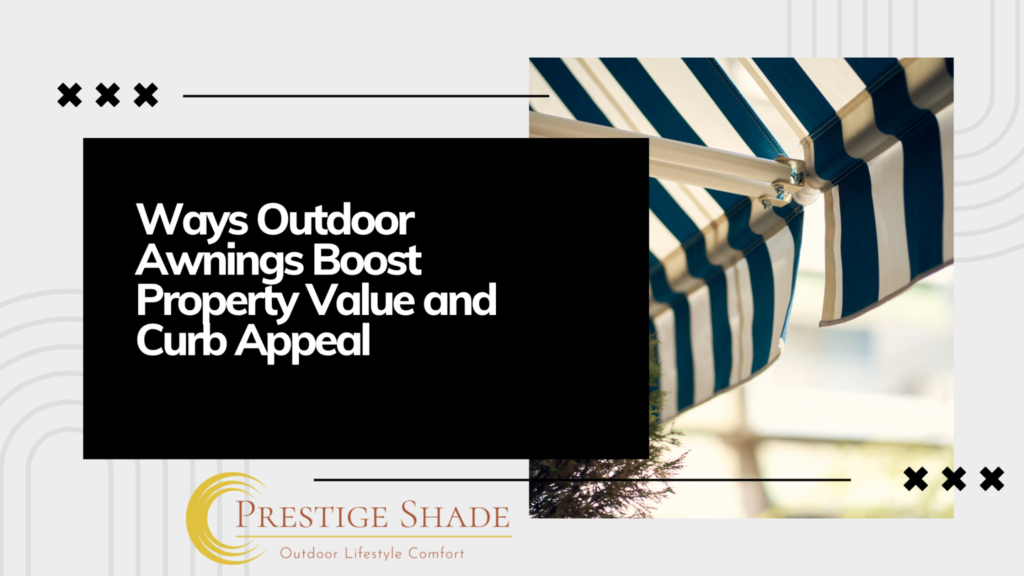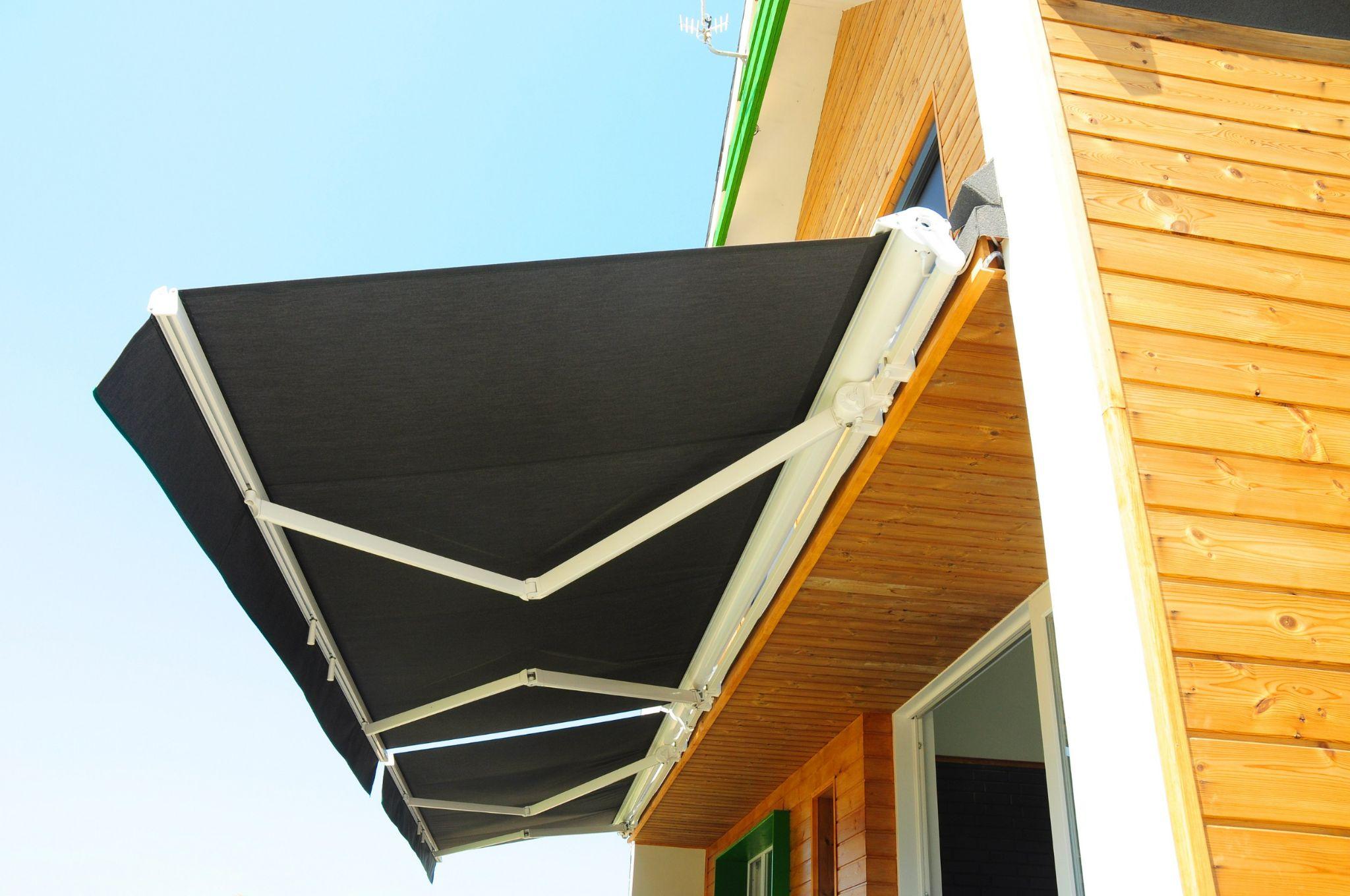
- Outdoor awnings boost property value by improving curb appeal, energy efficiency, and outdoor usability.
- They reduce maintenance needs, protect against sun damage, and add a touch of luxury to any home.
- Selecting the right awning and ensuring proper installation helps maximize both function and resale value.
Curb appeal often serves as the first impression a property makes on prospective buyers, neighbors, and even passersby. In a housing market where small design elements can significantly sway buyer decisions, outdoor awnings are gaining renewed attention. These functional and aesthetic additions not only improve the visual character of a property but also contribute directly to its long-term value.
As architectural trends increasingly emphasize sustainability, outdoor living, and personalized style, awnings have emerged as one of the most strategic investments for enhancing both curb appeal and real estate value.
How Outdoor Awnings Boost Property Value and Curb Appeal
While homeowners often focus on landscaping or repainting for exterior upgrades, outdoor awnings offer a multi-layered return on investment. Their ability to combine beauty with utility makes them an overlooked powerhouse in property improvement. From creating shaded retreats and reducing energy bills to protecting the home’s structure from weather-related damage, awnings influence how a home is perceived and how well it performs.
Enhances Visual Appeal and First Impressions
The exterior of a home sets the tone for what’s inside. Outdoor awnings immediately elevate that first impression by introducing structure, symmetry, and a sense of purpose to a building’s façade. Whether over windows, doors, patios, or balconies, awnings add visual weight in all the right places. Unlike a simple paint refresh, awnings introduce texture, shadow, and color contrast that can transform a flat exterior into a dynamic space.
With today’s customizable options, homeowners can select awning designs that complement specific architectural styles—traditional, Mediterranean, coastal, contemporary, or minimalist. Awnings can be tailored through fabric patterns, frame finishes, scalloped trims, and other stylistic choices that align with the home’s overall palette. These design choices contribute to a cohesive exterior appearance that makes the property stand out, especially in neighborhoods where visual distinction drives perceived value.
Moreover, awnings tend to signal maintenance and care. To prospective buyers, a home with well-maintained awnings sends a message of thoughtful ownership. A visually appealing property that presents as move-in ready naturally commands more interest and higher offers.
Provides Functional Outdoor Living Spaces
One of the most desirable features in modern real estate is usable outdoor living space. Awnings make this possible by turning patios, porches, and decks into shaded, comfortable environments. As lifestyles continue to blur the boundaries between indoor and outdoor living, the value of spaces that support year-round enjoyment continues to grow.
By extending covered areas, awnings essentially increase the functional square footage of a home. Buyers see shaded patios not just as exterior space, but as an opportunity for alfresco dining, family gatherings, or quiet morning coffee routines. This perception of added lifestyle value plays a direct role in shaping purchase behavior and property value.
Retractable awnings offer the added benefit of flexibility—homeowners can extend them during sunny hours and retract them in cooler weather or to protect the mechanism from storms. Fixed awnings, meanwhile, offer durability and design permanence that integrate into the structure. In both cases, the result is a versatile outdoor zone that attracts buyers who envision themselves living not just inside a home, but within its outdoor spaces too.
Increases Energy Efficiency
As energy costs continue to rise, homebuyers are becoming more attuned to features that enhance energy efficiency. Outdoor awnings play a subtle but effective role in reducing a home’s reliance on mechanical cooling systems. By shading windows, doors, and exterior walls from direct sunlight, awnings significantly reduce solar heat gain, a leading cause of indoor temperature spikes in warmer months.
In homes with large south- or west-facing windows, this shading effect can make a noticeable difference in internal comfort levels. Even without touching the thermostat, homeowners can experience cooler indoor spaces, which in turn reduces the workload on air conditioning units. The long-term savings on energy bills contribute to the overall appeal of the property, particularly for environmentally conscious buyers.
Modern fabric technologies also include reflective coatings or UV-blocking features that further increase energy performance. When viewed from a valuation standpoint, energy-efficient homes hold stronger resale potential, especially as more municipalities introduce building standards that prioritize environmental responsibility.
Protects Windows, Doors, and Furniture from Sun Damage
Prolonged exposure to ultraviolet (UV) rays can degrade not only the exterior elements of a home but also its interior furnishings. Fading hardwood floors, sun-bleached carpets, and cracked leather upholstery are all signs of excessive sun penetration. Outdoor awnings act as a protective barrier, blocking UV rays before they enter through glass panes and cause damage.
This exterior protection extends to the structural components of the home. Window casings, door frames, and even exterior siding can deteriorate over time from constant sun and weather exposure. Awnings help shield these elements, reducing the frequency and cost of repainting, refinishing, or full replacement.
To potential buyers, this level of protection suggests that the home has been proactively maintained. Buyers often perceive properties with awnings as homes where preventative measures have been taken, implying fewer repair expenses down the road. As a result, homes equipped with awnings tend to be more attractive from a maintenance and longevity perspective.
Adds a Perceived Sense of Luxury and Customization
Luxury in real estate doesn’t always mean high-end finishes or expansive square footage. Often, it’s the small, intentional upgrades that suggest a home has been curated rather than merely inhabited. Outdoor awnings fall into this category. They signal design intention, comfort, and attention to detail—qualities often associated with more premium properties.
Awnings evoke a resort-style experience when placed thoughtfully across patios, poolside lounges, or balconies. Their presence can transform a typical backyard into a tranquil retreat, elevating the entire property’s ambiance. Even simple additions, such as window awnings in striped patterns, can create a charming, European feel that sets the home apart.
Because awnings are so highly customizable, homeowners have the ability to tailor them to their exact preferences, further strengthening the sense of personalization and luxury. In real estate, this level of customization enhances perceived value and gives the home a competitive edge in the market.
Increases Home Appraisal Value
Real estate appraisers evaluate more than just square footage and neighborhood comps; they also consider functional upgrades and structural enhancements that improve livability and energy performance. Awnings check several of those boxes. When properly installed and maintained, they are often viewed as permanent exterior improvements that can positively impact a home’s appraised value.
Appraisers may consider how awnings improve outdoor usability, reduce interior fading, and lower energy demands. Homes that feature upgraded outdoor amenities, including shade solutions, often command higher valuations because they offer more than just shelter—they offer lifestyle.
In areas where summers are particularly intense, the shading capabilities of awnings are especially appreciated. In these regions, appraisers and buyers alike may assign greater value to awnings simply because they support year-round comfort. As outdoor living becomes an increasingly important part of how properties are marketed, features like awnings will likely carry even more weight in appraisal reports.
Seasonal and Regional Flexibility
One of the most underrated advantages of outdoor awnings is their adaptability across climates and seasons. In colder regions, retractable or removable awnings offer the flexibility to enjoy full sun during winter months. In sunnier locales, fixed awnings provide constant protection and reduce sun exposure throughout the year.
Different materials and designs also cater to specific regional needs. Coastal areas benefit from corrosion-resistant metal frames and mildew-resistant fabrics, while desert homes may opt for heat-reflective textiles to manage intense UV levels. This ability to tailor awning features to geographic requirements adds further appeal to a wide buyer demographic.
Prospective homeowners see this climate-aware design as a smart investment. It signals that the property has been optimized not just for aesthetics, but for livability in specific environmental conditions. In a market that increasingly values climate resilience, such upgrades can drive up both perceived and actual property value.
How to Choose the Right Awning to Maximize Value

Choosing the right awning goes beyond picking a stylish color or pattern; it’s about making a strategic upgrade that complements your property and appeals to future buyers. The right selection can bridge function with form, ensuring long-term satisfaction and a solid return on investment.
Consider the Orientation and Purpose
Think about where the sun hits your property and what you want the awning to do—whether it’s shading a deck, protecting a window, or enhancing a patio. South- or west-facing areas often benefit most from shading features that reduce glare and indoor heat.
Match Style with Architecture
Select an awning design that harmonizes with your home’s architectural style. For example, striped fabric can add charm to a cottage-style home, while sleek, solid colors pair well with modern or minimalist designs.
Prioritize Quality Materials
Invest in high-performance fabrics and durable frame materials that resist fading, rust, and wear. UV-resistant textiles and powder-coated frames offer longevity, reduce maintenance, and hold their appeal for years.
Opt for Customization Options
Tailoring your awning with choices in size, trim, color, and mechanism (manual vs. motorized) ensures it meets your practical needs and aesthetic preferences. Custom awnings also tend to boost resale value due to their unique fit and finish.
Ensure Professional Installation
While DIY kits exist, professional installation guarantees proper alignment, structural integrity, and warranty protection. A poorly installed awning can detract from home value and even cause damage in adverse weather.
Looking to elevate your home’s appearance and increase its value? At Prestige Shade, we specialize in custom outdoor awning solutions designed to complement your property and maximize its potential. Contact us today for a personalized consultation and see how we can help you bring function and flair to your exterior space.

